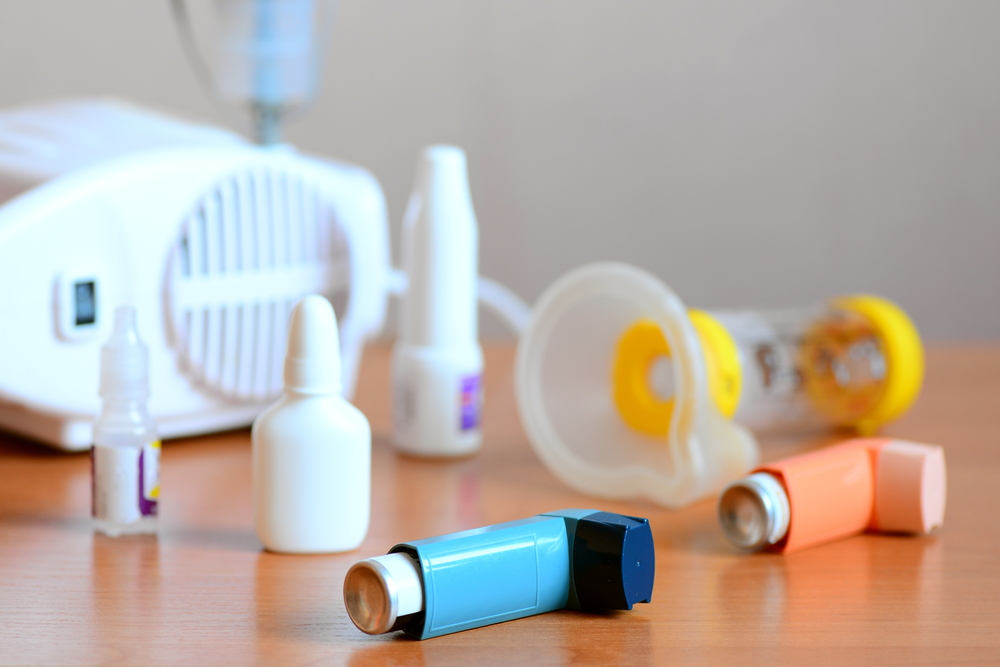Back to Basics is a weekly feature that highlights important but possibly overlooked information that any EHS professional should know. This week, we examine work-related asthma and NIOSH’s recommendations for prevention.
Asthma is a lung condition in which the airways become narrow and inflamed, and it is accompanied by episodes of wheezing, chest tightness, shortness of breath, and coughing. According to the National Institute for Occupational Safety and Health (NIOSH), work-related asthma is asthma triggered by an exposure at work. There are over 300 known or suspected substances in the workplace that can cause or worsen asthma, and avoiding those triggers can prevent asthma from worsening.
NIOSH cautions employers to pay attention to new or worsening asthma in a worker because it could be indicative of workplace causes. Symptoms can appear shortly after exposure, or months or years after repeated exposures to triggers.
Types and causes
There are two categories of work-related asthma, says NIOSH. Occupational asthma is caused by worksite exposures, and work-exacerbated asthma is when existing asthma is worsened by worksite exposures to irritants, allergens, or physical conditions.
The causes of work-related asthma include exposures to worksite irritants, allergens, and physical conditions such as:
- Animal dander and insects
- Chlorine-based cleaning products
- Cigarette smoke
- Cockroach droppings
- Cold air
- Dust from wood, grain, flour, or green coffee beans
- Dust mites
- Gases such as ozone
- Indoor dampness and mold
- Irritant chemicals
- Metal dust
- Physical exertion
- Pollen and plants
- Strong fumes
- Chemical vapors (e.g., ammonia, isocyanates, solvents)
- Wood smoke
NIOSH provides a list of more worksite irritants in each different industry, and it emphasizes that new exposures associated with work-related asthma are constantly being discovered and recognized.
Symptoms and treatment
The symptoms of work-related asthma and regular asthma are the same, and they include wheezing, coughing, chest tightness, and shortness of breath. Some might not have all the symptoms, and often the symptoms come and go, NIOSH states. Symptoms also tend to get better on weekends, vacations, and time away from the job, but some do not get better until extended periods away from the exposure.
Doctors are able to diagnose a person with work-related asthma by asking questions about your symptoms and conducting a physical examination. They may want to order breathing tests and allergy tests such as blood or skin tests to further determine the diagnosis. A worker should tell their doctor about work exposures and possible asthma triggers, including the tasks they perform and the materials they work with. NIOSH recommends logging symptoms where and when they occur to help determine any patterns that may be happening.
Workers with asthma should work with their doctor to develop a personal asthma control plan. Treatment for asthma includes stopping or reducing exposure to the triggers which are causing symptoms, and two general types of medicine:
- Quick-relief rescue inhalers: these contain drugs like albuterol or levalbuterol that work to open the airways, and can be used during asthma attacks or flare ups
- Long-term control medicines: these are medicines that reduce inflammation in the airways and keep symptoms from occurring
Prevention
Employers and employees can both contribute to preventing work-related asthma, says NIOSH. The main objective should be to minimize exposure to work-related asthma triggers, and to develop and maintain a worksite safe from triggers.
Employers should follow a hierarchy of controls when tackling this health issue in their workplaces. NIOSH recommends first eliminating or substituting hazardous processes or materials, taking the necessary precautions to prevent potentially harmful exposures and reducing the need for future controls. The next step is installing engineering controls to reduce exposure or shield employees, which could involve isolating or enclosing processes, or providing local exhaust ventilation.
The third step is to implement administrative controls such as work practices or policies that reduce or prevent hazardous exposures. This also includes training employees on potential hazards, the precautions they should take, and workplace policies for reporting issues. Employers should also establish a no-smoking policy in the workplace, as tobacco smoke is a trigger for some people with asthma. NIOSH recommends employees consider monitoring for asthma through questionnaires and routine lung function testing, which could help identify workers with asthma at earlier stages of the illness.
The last control is personal protective equipment (PPE), and it may be necessary, but it should only be used until the engineering and administrative controls begin adequately preventing exposures. Employers should consider that proper PPE use requires specific selection for each hazard, a comprehensive program, and a high level of worker involvement and commitment.
Employees can help prevent work-related asthma by being attentive to their work environment, especially the workers with breathing problems. If an employee feels like they have work-related asthma symptoms, they should do the following, according to NIOSH:
- Identify and avoid exposures to asthma triggers
- Participate in the employer’s asthma surveillance plan if one is available
- Report new or worsening symptoms to a doctor and the designated person at work
- Immediately report to your supervisor if PPE or engineering controls malfunction
- Take asthma medications as prescribed and regularly see a doctor and get a flu shot annually
- If smoking is a factor, speak with a doctor and the employer about resources to help with quitting

